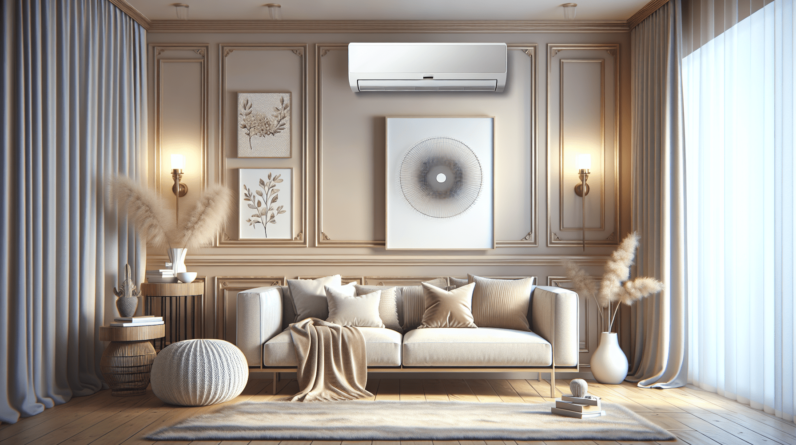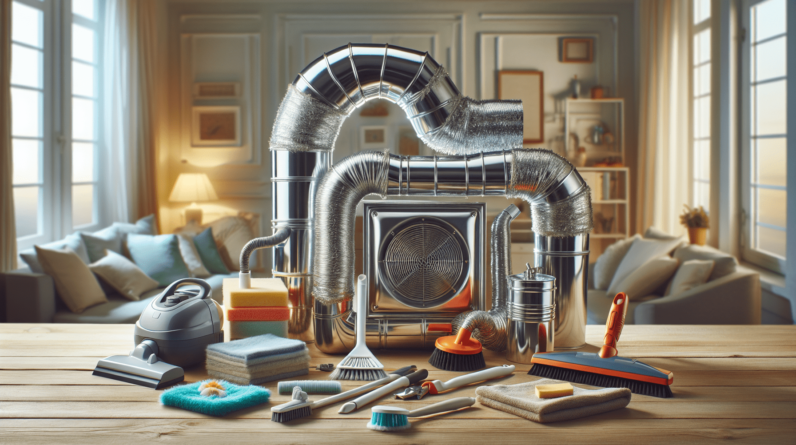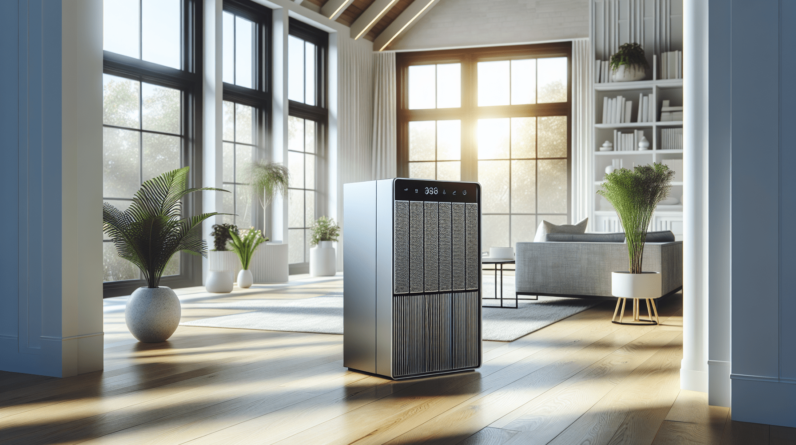

Have you ever felt uncomfortable during the hot summer months, wishing for a cool breeze to relax your space? If that sounds familiar, then you’re likely considering an air conditioner for your wall. Let’s talk about everything you need to know about wall-mounted air conditioners to help you make an informed decision.
What is a Wall-Mounted Air Conditioner?
A wall-mounted air conditioner is a cooling system specifically designed to be installed high up on a wall. Unlike traditional window units, which can block your view, these units remain out of the way, providing an efficient way to keep your space comfortable. They are particularly popular in apartment living and spaces where window installation isn’t practical.
How Does It Work?
At its core, a wall-mounted air conditioner operates much like any other air conditioning system. It pulls in warm air from the room, cools it through a refrigerant cycle, and then circulates the cool air back into your living area. The advantage of wall-mounted models is that they typically have a higher BTU (British Thermal Unit) rating, meaning they can cool larger spaces effectively.
Types of Wall-Mounted Air Conditioners
When you decide to get an air conditioner for your wall, you’ll come across a variety of types. Understanding these can help you pick the right one for your needs.
1. Split-System Air Conditioners
Split-system air conditioners consist of two main components: an indoor unit and an outdoor compressor. This separation allows for quieter operation indoors and greater cooling efficiency.
Benefits:
- Quieter than window units.
- More energy-efficient.
- Offers better cooling performance for larger areas.
2. Through-the-Wall Air Conditioners
These units are installed directly into the wall, requiring a dedicated opening. They provide permanent installation and are ideal for homes where window air conditioners aren’t suitable.
Benefits:
- Space-saving design.
- Permanently installed, reducing the chance of theft.
- Greater cooling capacity than portable units.
3. Mini-Split Systems
Mini-split systems are a sub-type of split systems that are perfect for homes without ductwork. They consist of an outdoor compressor and multiple indoor air handlers.
Benefits:
- Flexibility to cool multiple rooms.
- Energy-efficient with zoned cooling options.

Choosing the Right Air Conditioner for Your Wall
Selecting the right wall-mounted air conditioner involves several factors that can drastically affect your comfort and energy costs.
BTU Capacity
BTU (British Thermal Unit) is the measurement of cooling power. Choosing a unit with the right BTU capacity is crucial.
| Room Size (sq. ft.) | Recommended BTU |
|---|---|
| 100 – 300 | 5,000 – 7,000 |
| 300 – 600 | 7,000 – 14,000 |
| 600 – 1,000 | 14,000 – 24,000 |
Getting this right can save you money on energy bills and enhance your comfort.
Energy Efficiency Ratio (EER)
EER measures how efficiently a cooling system operates. The higher the EER rating, the more energy-efficient the unit is. Look for units with an EER of at least 10.
Noise Level
When choosing an air conditioner for your wall, pay attention to its noise level. Most units will specify their dB level. For peaceful environments, aim for units that produce 50 dB or less.
Installation Process
Installing a wall-mounted air conditioner can seem daunting, but with the right information, you can simplify the process.
Tools and Materials Needed
Here’s a quick list of what you’ll need:
- Mounting bracket (usually included with the AC unit)
- Screwdriver
- Drill
- Measuring tape
- Level
- Sealant and insulation material
Steps to Install
-
Select the Right Location: Find a suitable wall that can support the weight of the unit and is close to a power source.
-
Measure and Cut the Opening: Using the template that comes with the unit, mark the area where you will make the cut.
-
Install the Mounting Bracket: This bracket holds the unit in place. Use your level to ensure it is straight.
-
Insert the Unit: Slide the air conditioner into the wall opening, securing it to the bracket.
-
Seal Around the Unit: Use sealant to fill any gaps around the unit to prevent air leaks.
-
Connect the Electrical Wiring: Follow the manufacturer’s instructions for this step.
Professional vs. DIY Installation
While installation is something you can do yourself, hiring a professional might be the better option in some cases. A professional can ensure that your unit is installed correctly and operates efficiently without any complications.


Maintenance Tips for Your Wall-Mounted Air Conditioner
Just like any appliance, keeping your air conditioner well-maintained will help extend its life and efficiency.
Regular Cleaning
Make it a point to clean your air conditioner at least once a month during the cooling season. This includes:
- Cleaning the filter: A dirty filter can significantly hinder performance.
- Wiping down the unit: Dust can accumulate, affecting airflow.
Check for Refrigerant Leaks
If you notice that your air conditioner isn’t cooling well, it might have a refrigerant leak. Monitoring the performance closely can help catch this issue early.
Schedule Professional Maintenance
Consider scheduling a professional maintenance check at least once a year. They can inspect crucial components and clean places you can’t reach, ensuring everything runs smoothly.
Common Issues and Troubleshooting
Even with the best care, problems can arise. Knowing how to troubleshoot common issues can save you time and money.
The Unit Won’t Turn On
- Check Power Supply: Make sure it’s plugged in and the circuit breaker hasn’t tripped.
- Inspect the Remote: Battery issues are common with remote controls.
Not Cooling Properly
- Dirty Filter: Clean or replace it to restore efficient airflow.
- Thermostat Settings: Make sure it’s set correctly for your desired temperature.
Unusual Noises
- Vibrations: Ensure the unit is securely mounted and check for loose parts.
- Strange Sounds: These can indicate a malfunction that needs professional assessment.
The Future of Wall-Mounted Air Conditioners
As technology advances, wall-mounted air conditioners are evolving too. Here are some trends to look into:
Smart Technology Integration
Many new models come with smart technology that allows you to control the unit with your smartphone or voice assistant. This feature can enhance energy efficiency and convenience.
Energy Star Models
With growing concerns about climate change, many manufacturers are focusing on producing Energy Star-rated models that consume less energy without compromising performance.
Hybrid Systems
These systems can draw from various energy sources, including electricity and solar power, to optimize efficiency and reduce energy costs.
Conclusion
Choosing the right air conditioner for your wall doesn’t have to be overwhelming. With the right knowledge, you can make an informed decision that will keep your living space cool and comfortable for years to come. Whether you opt for a split-system or a through-the-wall unit, keep in mind the importance of proper installation and maintenance to ensure maximum efficiency.
By taking care of your air conditioner and considering new technologies, you may find that staying cool during the heat of summer isn’t just a dream—it’s a wonderful reality!






